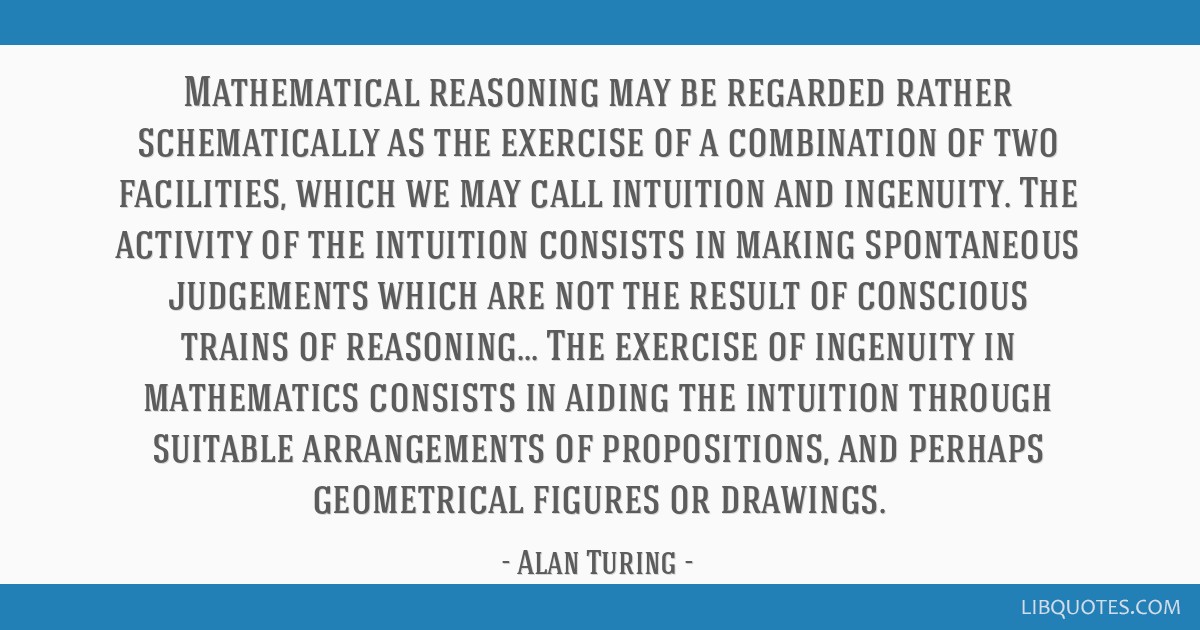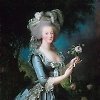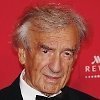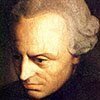Mathematical reasoning may be regarded rather schematically as the exercise of a combination of two facilities, which we may call intuition and ingenuity. The activity of the intuition consists in making spontaneous judgements which are not the result of conscious trains of reasoning... The exercise of ingenuity in mathematics consists in aiding the intuition through suitable arrangements of propositions, and perhaps geometrical figures or drawings.
"Systems of Logic Based on Ordinals," section 11: The purpose of ordinal logics (1938), published in Proceedings of the London Mathematical Society, series 2, vol. 45 (1939)























